When one thinks of transformation, change management and EmPOWERment, a closer look at the skate park in the remote Indian village of Janwaar, whose inhabitants live just about poverty line, does not really seem to make sense. But only at first glance – a second look shows that companies can learn enormously from this example. The approach in Janwaar is different, unconventional, creative – and for that very reason very successful. It is precisely this contrast between the culture of the isolated village and the culture of hip, cosmopolitan skateboarding that triggered a powerful social transformation on several levels.
In the article, you will learn how the skatepark came into being, how the village and its inhabitants reacted to it and how enormous the changes are to this day. From this story, lessons can be derived for companies that are facing a change process – or are in the middle of one. I can tell you right away: it’s not advice you’ll find in the usual books on the subject.
This article was written for managerSeminare.
Janwaar – The Village
Janwaar is one of 700,000 villages in India. It is located in the Madhya Pradesh part of Bundelkhand, one of the poorest areas of India, 630 km south of Delhi. It has a population of just under 1200. Bundelkhand is also known as the Wild West of India where law and order is often taken into one’s own hands. Feudal landowners dominate the rural population and oppress the lower castes and Untouchables. Nothing has changed in the past 30 years. Everything goes its predetermined way. There are no surprises. No one has an interest in the village and no one is doing anything to change that. Standstill.
Janwaar fulfils every cliché we know from films.
Children in torn clothes with big brown eyes.
Women in wonderfully coloured sarees carrying water.
Smoking, card-playing, noisy men.
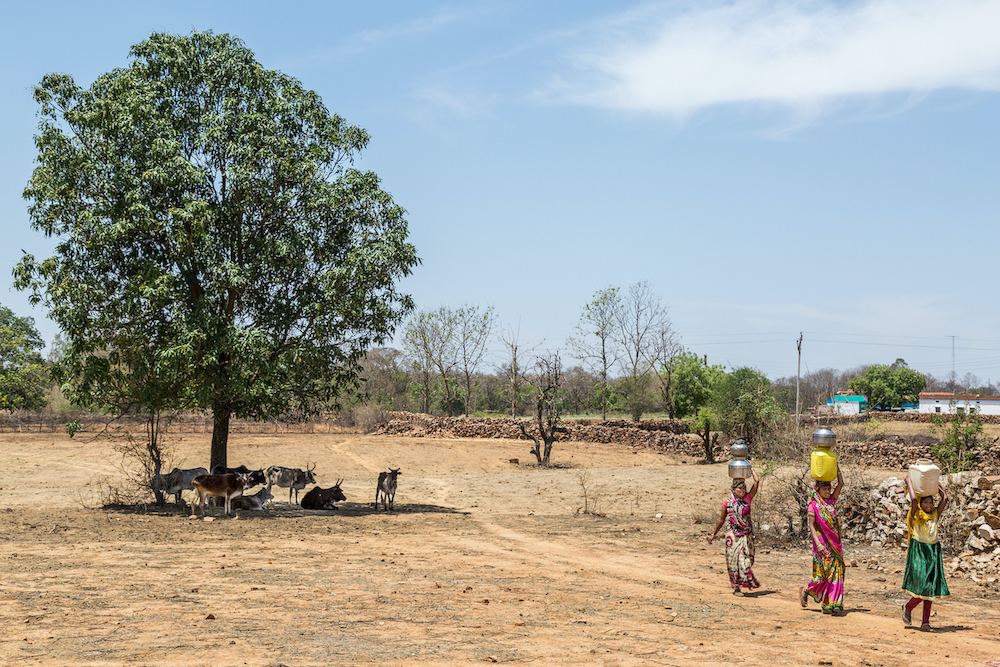
No electricity or water supply, no toilets, no clinic.
Illiteracy, alcohol and rubbish.
Oppression of women, domestic violence and child marriages.
Unemployment, poverty and malnutrition.
Water wells, mud huts and caste rule.
I first came to Janwaar in the summer of 2014. I had already been in India for two years and had a failed school project with an Indian family behind me. The visit to Janwaar was at the invitation of my Indian landlord, a descendant from a Maharaja family, who asked me if I would like to start a project in his “kingdom”. My project idea was to build a skate park. And there was a plot of land for it in Janwaar. That’s why I came there.
It was boiling hot and not a soul was to be seen far and wide. No wonder at 45 degrees in the shade. Everything was parched, it had not rained for months and the well water was at rock bottom.
I was in the company of two gentlemen. One of them owned the land, the other was my interpreter. I didn’t speak a word of Hindi at the time, let alone the local dialect Bundeli. We had already looked at two plots in the town 15km away and the two had urged me to look at the land in Janwaar. And that was good. Because I liked the village and the piece of land.
My decision for the land was made.
The skate park was to be built in Janwaar.
It could have been any other village.
The story that unfolded – I maintain – would not have changed.
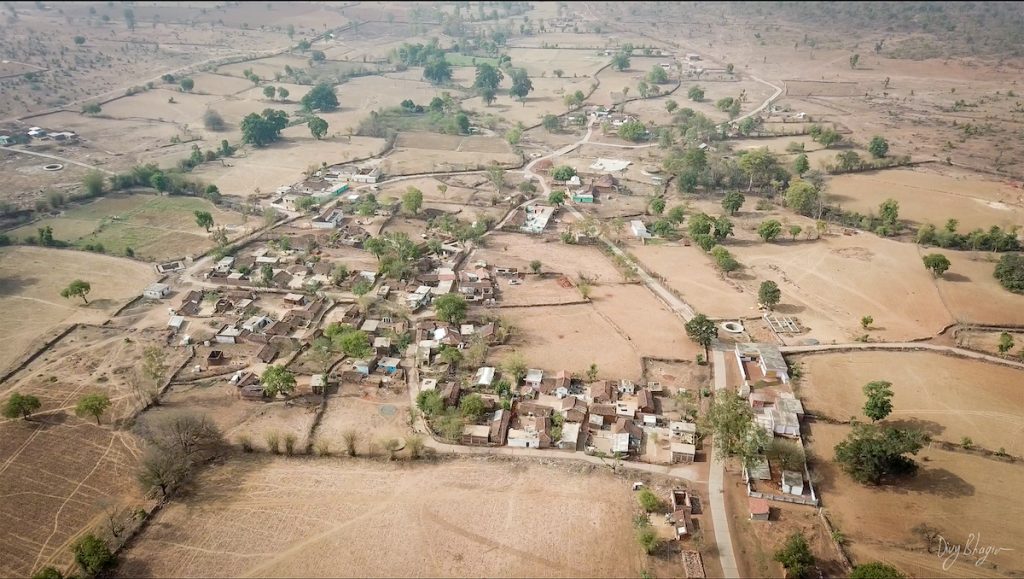
Why a skatepark?
Quite simply, because of the culture the sport of skateboarding has.
The skateboarding culture is powerful.
Very often it is understood as a counter-culture!
Being against the mainstream.
It’s about disobedience, resilience and finding your own way.
It is about everything that this village of Janwaar did NOT have!
It is about …
… culture and counter-culture
And friction that comes out of it.
The culture in Janwaar is very much determined by the tradition of caste and gender. It’s a rather closed system with little outside influence. The skateboarding culture is the exact opposite.
My assumption was: if I bring these two cultures together, i.e. provoke a clash of culture, then friction processes arise from which something new can emerge.
I expected that the skatepark would “disturb” Janwaar in such a way that the village and its inhabitants would start moving and out of this movement, something new could emerge. Up to now, there had been stagnation – and I wanted to break this stagnation. My vision was to make Janwaar a more liveable place, to break down inequalities, create jobs and make learning worthwhile. That was what I wanted to achieve. I did not define any other goals – I deliberately wanted to leave the HOW, WHO, WHEN and WHERE open – it was about creating an open-ended process with the villagers.
The following three points were important to me in shaping the process:
- The skatepark had to be an “open system” in other words, without a fence in the middle of the village, accessible to everyone; there should be no gatekeeper. I had seen a skate project a few years earlier in Kabul, Afghanistan – Skateistan – which fascinated me on the one hand, but also made me very thoughtful. The fascination came from the sport itself. I saw teenagers enthusiastically riding skateboards in veils. Unthinkable in an Afghan village. What made me think was that this skateboarding school was outside the community to which the girls belonged. NOTHING was happening in the community itself. I wondered how are these girls going to manage when they come back – the community will not allow them to do that. That’s why I did it differently in Janwaar.
- I put two rules in places that had to be followed and that set the framework for the project. The first rule was “no school, no skateboarding” – I didn’t want to compete with the village school. It resulted in a 50% increase in attendance at school. The second rule was “Girls First!” I wanted to be sure that girls also got a skateboard. And this rule served exactly that purpose.
- And it was important to me that it is not me who decides in which direction the change goes, but that it is the villagers who decide and that I stand by them as an advisor and networker for the implementation of THEIR ideas. Participation was important to me and I wanted the villagers to contribute their knowledge – which is completely different from my knowledge – to all projects. This means that from the beginning I was an observer, not a designer. I observed what was happening and accompanied the ideas that the Janwaar citizens brought forth.
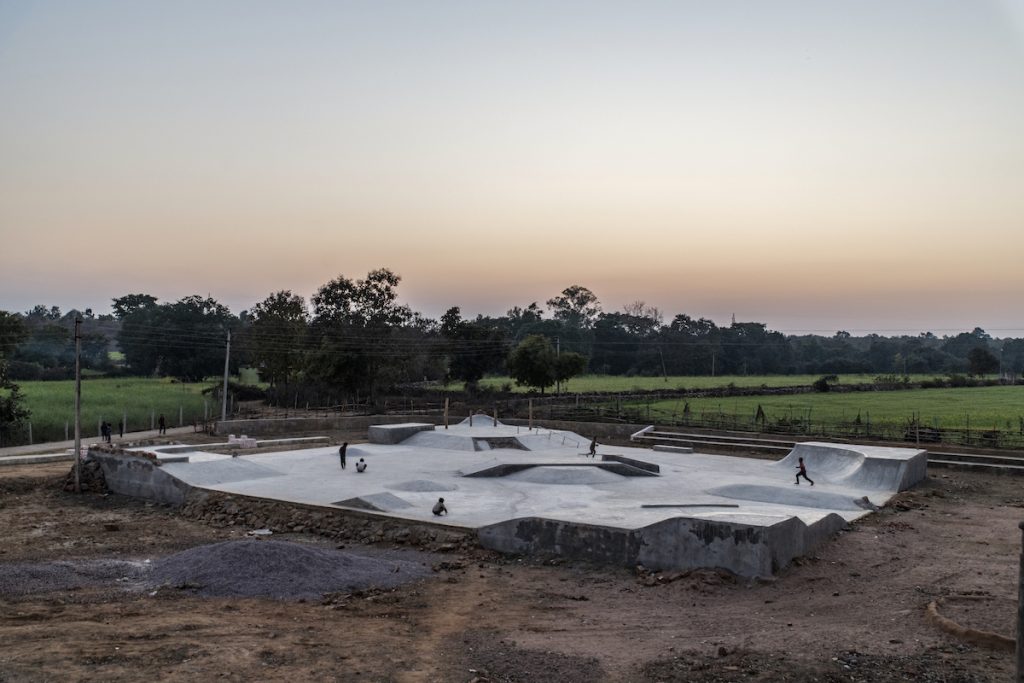
The Skater Girl – A story
In December 2014, we started building the skate park. There were 12 skateboarders from seven different countries and together with the locals they built the skatepark. During the construction, the name for the skatepark was found: Janwaar Castle – The Janwaar Castle! It is still called that today. The design for the park was done by a German architect.
In the following I will tell the story of a girl, her name is Asha, who illustrates the changes that have happened and are still happening in the village because of the skate park.
Asha’s life – like the life of every other girl in rural India – was predetermined. She had NO say in it. That is the tradition.
Asha is an untouchable.
She lives with her parents in a mud hut. She is the youngest of three children, her elder sister is already married, her brother lives and works in Bhopal, the capital of Madhya Pradesh, and supports the family.
Asha’s life consisted of helping her parents with the field work and keeping the house in order.
Contact with the other caste in the village was not allowed.
In general, it was not proper for girls to walk around the village.
They only do that when they have work, for example fetching water.
Asha had dropped out of school – her parents did not have enough money to send her to a school in the city.
Besides, her labour was needed at home.
Asha was 16 years old at the time.
Her parents were planning her wedding.
A suitable husband was being sought.
She was shy, spoke very softly and only when asked.
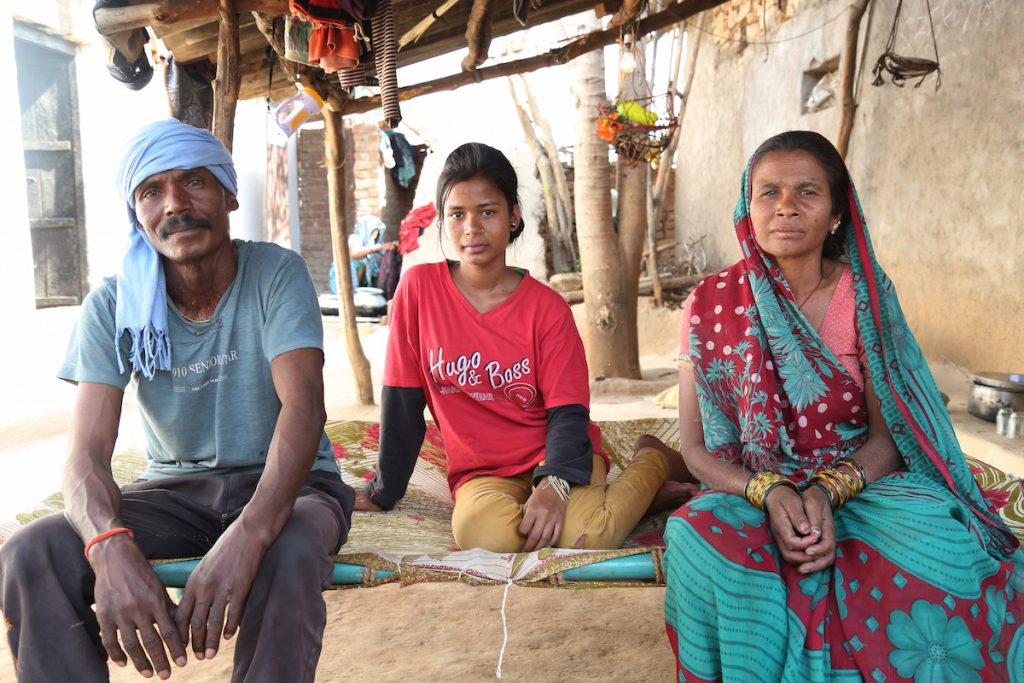
Then came the skate park.
To make the skatepark popular, especially with the girls, I had organised a summer camp two months after it was finished. It took place during the school holidays and apart from skateboarding sessions there were music and creative workshops with local artists and also an English course. A friend from England who was a teacher held the lessons at the time. By the end of the six weeks – there were two hours of programmes in the morning and two hours in the late afternoon – the number of children attending had grown from 10 to 60!
Asha came to the camp every day.
Despite her work.
Later I found out that she sneaked away from home.
She was mostly active in the English lessons and got involved in skateboarding. She seemed to enjoy this very much.
At the end of the camp, there were certificates of participation. In India they love these. When I handed Asha the certificate, she said she would like to learn more English to be able to talk to me better. I then asked her spontaneously if she would like to learn English in England. She said yes.
I don’t think she had any idea where England was. But that was irrelevant. She wanted to learn and was not afraid. At least that’s how it seemed. The idea of studying in England was born and took its course.
Unfortunately, it was not as easy as we thought. Asha’s parents were not very enthusiastic about our plan. They said NO very firmly and clearly. Over and over again. It took me eight months to finally convince them – my winning argument was that of education. Asha would have better job prospects if she spoke English. For the parents, this meant the chance of support later on. And they understood that. And they agreed to the trip.
It was actually a hell of a ride when I think back to that time. But I learned a lot and this project was an important one in the village. That is always much easier to judge in retrospect.
Asha always remained calm during the whole process; she had her goal firmly in mind and directed everything towards it. A little diversions here and there, did not make her deviate from her path. The moment when she was the first in the village to hold a passport in her hands was tremendous. All the untouchables in the village were proud – one of them, not a boy from a caste, had the first passport and was to travel “far”.
The parents were proud and had, at least it seemed, complete confidence. Their decision to let Asha travel was firm – against all odds in the village. And these were considerable, especially the Yadav caste could not understand why no boy of theirs would make this first journey. They put pressure on the family, invented lying stories and tried to manipulate me too.
The village was in turmoil.
Something was happening.
Even though it was not always pleasant and friendly, all these discussions and arguments had one big advantage – people talked to each other, which had not happened before. The strict division by caste was somewhat broken down for the first time in this project.
The project gave Asha a boost and initially made it into the local newspaper of the nearby town. It was BIG NEWS: a village girl travels the world to learn English! Social media did the rest – Asha became a minor celebrity. Soon after came national television. They produced the first TV documentary featuring Asha: “When you dare to dream!” – in it, Asha described her feeling while skateboarding: “It feels like I’m flying as free as a bird!”
Janwaar village on national TV – everyone was proud, including the supposed opponents of the project! There are no TV sets in the village, no. But the filming on location attracted a lot of attention and interest. The fact that the film crew lived in the village was also gratefully received – because it brought money into the village. There are now four homestays, which are often fully booked.
Asha’s travel preparations were in full swing and it was up to me to accompany Asha to London. Her first flight, separated from her village and family for the first time and not really speaking the foreign language. It was already bubbling up inside her, but nothing could hold her back. In England, she stayed outside the big city with my friends who had a teenage son. They had prepared a nice programme for Asha – one-to-one English lessons, creative programmes at a nearby cultural centre and trips, including to skate parks!
Every week she had a phone call to home – that was a big event every time. There was no network in the village itself. So the family we bought a smartphone for had to travel to the nearest town to see and talk to Asha via screen. 99% of the villagers didn’t have a phone at all at that time, and if they did, it was a very basic Nokia device without any comfort. Sometimes 20 people would set out to make a phone call.
The whole village was in turmoil! A glimpse of a new world.
Sometimes Asha felt lonely in England, she confided to her diary. But she enjoyed her time and absorbed everything like a sponge. On the flight back to India, she was alone – Mannan, one of our volunteers, brought her parents to the airport in Delhi as a surprise. For the parents, it was their first trip out of the village and straight into the big city. The joy of reunion was great.
Asha was back. And how. More self-confident, more self-assured and curious. Doors had opened that she didn’t even know existed. And she had many stories to tell – and everyone in the village wanted to hear those stories. Young and old, caste and untouchables, men and women. Suddenly something happened in the village – and differences disappeared. Something like a ‘we’ feeling emerged. We in Janwaar – we are reported about, we are noticed. We!
Back in Janwaar, Asha started working with the young children, she went skateboarding every day and didn’t listen to what others said about her. She went her way. Always supported by her parents. Always in cooperation with the others. She tried out, lost her shyness, learned and took responsibility.
Netflix made a film about Asha, which was released simultaneously in 190 countries. It’s called Skater Girl. They modified the story slightly, didn’t show everything in detail and changed the location. And they didn’t give her a credit. Asha cried at various points in the film when she first saw it with the other children at our community centre. She was angry because the film director and producer didn’t name her, but she was also very proud.
Because it was her story.
What businesses can learn from Janwaar
Before Janwaar became my main job, I was a management consultant for many years and worked closely with Prof. Peter Kruse, next practice. My main topics were corporate culture and change processes, driven by the internet. The corporate environment is not unfamiliar to me and it is not difficult for me to draw parallels between Janwaar and a company. The tools and principles applied are the same whether it is a village community or a company.
Here are my recommendations on what companies can learn from Janwaar.
DARE TO BE CONTRADICTORY!
Contradictions make a deadlocked system move, because they disrupt. Set counter poles, because this creates movement – without movement there is no change. Disruption means setting impulses and then giving the space for something new to emerge.
DO NOT EXCLUDE OR MARGINALISE!
Any disruption or experiment should be located in the centre of the organisation and be accessible to ALL who are interested or react to it. A so-called open system is desirable.
Outsourced labs or so-called spinner departments divide the company rather than move it forward. It privileges those who work in the lab or spinner department and neglects those who do not.
They give away potential when they exclude or segregate.
SET CLEAR RULES!
The rules create a framework within which new things can emerge and grow organically. “No School, No Skateboarding” and “Girls first!” were and are our rules. They formed the “hard poles” that were not shaken and at the same time addressed two problem areas in the village: school attendance and women’s inequality – without really calling a spade a spade.
It is important for the organisation to be clear about how it is allowed to operate in this newly emerging space. The rules are not about restrictions, they are about setting the framework, the infrastructure: for example, announcements about the budget, process, responsibilities, human resources. If this framework is not clearly defined, many of the new ideas will fizzle out. You should avoid this.
DO NOT SET TARGETS!
Make the disruption RESULT-OFFENSIVE. Predefined targets limit the creative space and they give away important potential.
An open-ended process is not contradictory to a vision. You should already have a vision; you should know where you want to go – but not when, where, how and with whom. That is the result of the process.
CHANGE HAPPENS STEP BY STEP!
Change processes never go stringently in one direction. Compromises and setbacks are part of it. The “old” will resist and try to maintain its position. So it doesn’t simply continue in a linear fashion, the way forward will spread out organically. That is why it is important that the framework for action is regulated.
THERE ARE DIFFERENT REALITIES!
Understand and accept different perspectives, they enrich the whole. Every staff member who contributes has a different story that shapes their perspective. Listen! Put up with contradictions and irritations where necessary; the tensions will never be completely resolved – and that is a good thing, because they keep the whole thing going. Employees, projects and the company grow from this friction.
EVERYONE IS REPLACEABLE!
Shape the disruption in such a way that the initiators themselves become obsolete. In plain language this means: stay out of it!
Only then will the new become self-sustaining, because those involved have created it themselves and take responsibility for it. They may do it differently than they would themselves, but that doesn’t matter. They have an influence on the framework and that’s all it needs to be. Even if it is difficult!
And Asha’s story continues
I had to leave India in April 2020 because of COVID and have not been back till today. India has denied me visa several times. Without giving any reason.
Skater Girl Asha is the director of the non-profit Barefoot Skateboarders Organisation, a non-profit limited company that the youth of Janwaar started with my help, is growing and thriving under Asha’s leadership. She has young skateboarders around her who take responsibility. They run many activities like the community centre, our small school, the vegetable garden, the skateboarding sessions, they manage the homestays, keep in touch with the project partners and sponsors and much more. They grow into their tasks and fill them more and more. They write their own history and lead Janwaar into a future that they determine and shape. My contribution today, is that of a mentor from afar, nothing more.
In May, Asha will write her final exams – then she will have her high school diploma.
Already, she is in a training project at a very good school in Noida, where she is preparing to become a teacher. She spends her time alternately in Noida and Janwaar.
She is a multiple Indian skateboarding champion and a role model for many Indian girls, including the girls in Janwaar. Some are following in her footsteps. She leads a team and even the boys follow her. Her parents leave her alone, will not marry her off, she is allowed to go her own way.
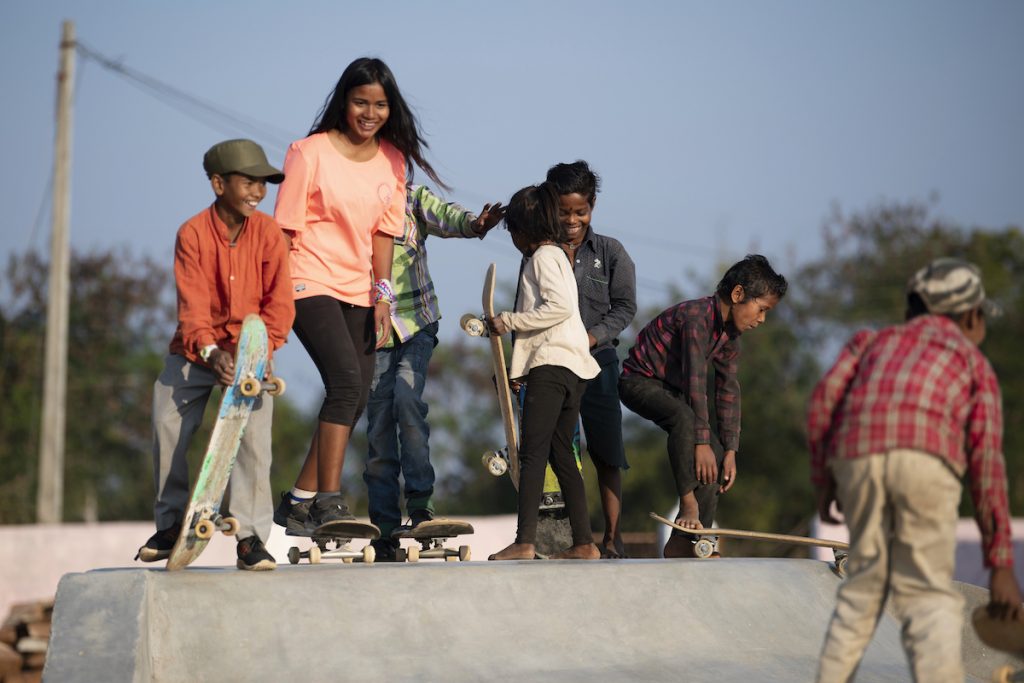
She has featured in several national commercials. Several short films have been made about her, she has won awards and gives talks. She is in the limelight. And with her, the village. All this came overnight, so to speak – it has to be processed first. She has nibbled on that again and again. Her path has not always been easy, there have been many ups and downs over the years, but Asha has stuck with it and has now found her way. Against all odds.
She has grown with her tasks and passes on what she has learned.
A young Indian woman whose life has changed 180 degrees because of a skate park.
And this is just one of many Janwaar stories.
Skateboarding has given Janwaar an identity.
Something that all the residents are proud of.
Something that connects and unites.
And makes many things possible.
Janwaar has a NEW CULTURE.
If that is not change!
If that is not EmPOWERment!
What then?